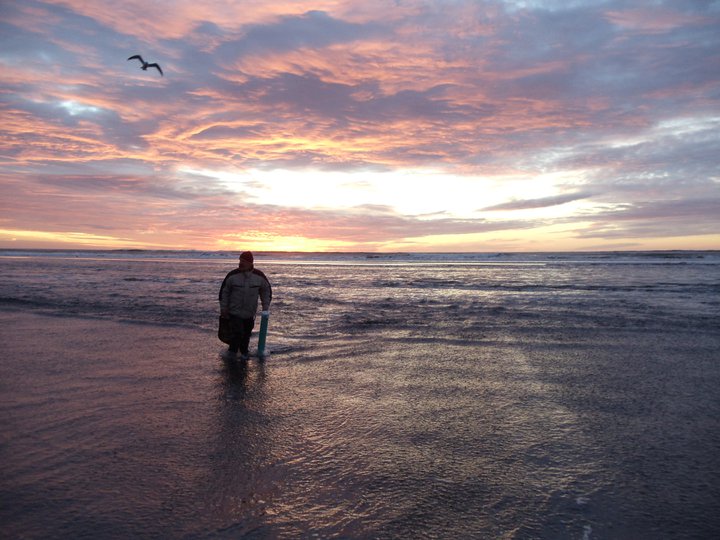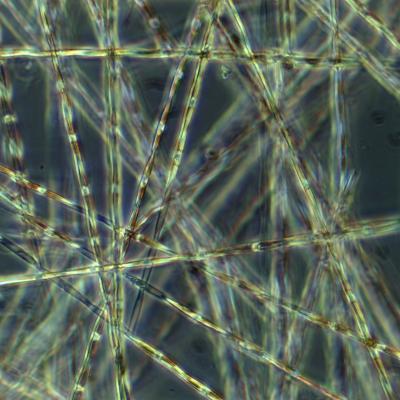
Razor Clam Bio Talks About Extended Closure, Lingering High Domoic Acid Levels
THE FOLLOWING IS A PRESS RELEASE FROM THE OREGON DEPARTMENT OF FISH AND WILDLIFE
The high level of domoic acid in Clatsop Beach razor clams is due to a perfect storm of harmful algal blooms (HABs), weather, ocean currents, and the clams’ own physiology. A lack of available food for the clams, a common phenomenon in fall and winter, is also to blame.
HABs are colonies of phytoplankton that grow out of control and produce toxins, including domoic acid which can accumulate in shellfish and can cause amnesic shellfish poisoning in people who consume the contaminated shellfish.

Matt Hunter, ODFW’s Shellfish Project Leader explained the problem began when a late September “stall” in ocean current and winds caused an offshore HAB. This stall resulted from the coastal current remaining southward instead of the fall transition northward and weak but predominant winds from the north rather than from the south.
If ocean waters had transitioned to a fall and winter pattern, wave action would have broken up the HAB. The stall continued into early October, transporting the HAB to the shoreline where Clatsop Beach razor clams in particular were actively feeding. Domoic acid rapidly accumulated in the clams’ tissues.
“It was a collision of these factors that we’re still dealing with today. This past fall, central and south coasts saw domoic acid produced by the HAB at levels 10 times the level where accumulation is seen in razor clams,” Hunter said.
Razor clam harvesting was closed Oct. 22, 2020 from Cascade Head (Lincoln City) to the north jetty of the Siuslaw River (Florence) due to high levels of domoic acid. That closure was extended up to the Columbia River just eight days later and on Nov. 20, the entire Oregon coast was closed to razor clam harvesting. The coastwide closure remains in effect.
Although the HAB broke up in mid-November, domoic acid levels in razor clams coastwide remains high in both Oregon and Washington.
Clatsop Beach razor clams have some of the highest toxin levels along the Oregon coast. Because these clams were actively feeding when the HAB moved shoreward, toxin accumulation was rapid and tissue accumulation quite high.

A lack of food for these clams is common in late fall and winter, causing the clams to use stored energy reserves until spring.
“As the razor clams use the stored reserves, their body size shrinks. We monitor domoic acid in parts per million, so the smaller the clams become, the more domoic acid is concentrated in their tissues,” Hunter said.
Domoic acid concentrations in Clatsop Beach razor clams during fall and winter has been a problem in the past. It begins to dissipate when food is available once again in spring and summer and when juveniles go through a growth spurt and adults prepare for spawning.
Hunter asks for patience from clam diggers. The current level of domoic acid in Clatsop Beach razor clams has never been seen during December and January and is tied for the fourth highest ever observed on this beach.
“The last HAB and domoic acid event in 2016 had a December peak domoic acid level half of what we saw this past December and the fishery was closed until October 2017. We hope this does not happen again, but clammers should be aware it’s not unrealistic for an extended razor clam harvesting closure,” Hunter said.
Oregon, Washington, and California follow U.S. FDA protocols in monitoring and testing shellfish for biotoxins for consistency between the states.
The Oregon Department of Agriculture (ODA) will continue to test for shellfish toxins twice per month, as tides and weather permit. Reopening areas closed for biotoxins requires two consecutive tests with results below the closure limit.
For more information, call ODA’s shellfish biotoxin safety hotline at (800) 448-2474, the Food Safety Division at (503) 986-4720, or visit theODA shellfish biotoxin closures webpage.
Click here for more information on shellfish and biotoxins.
